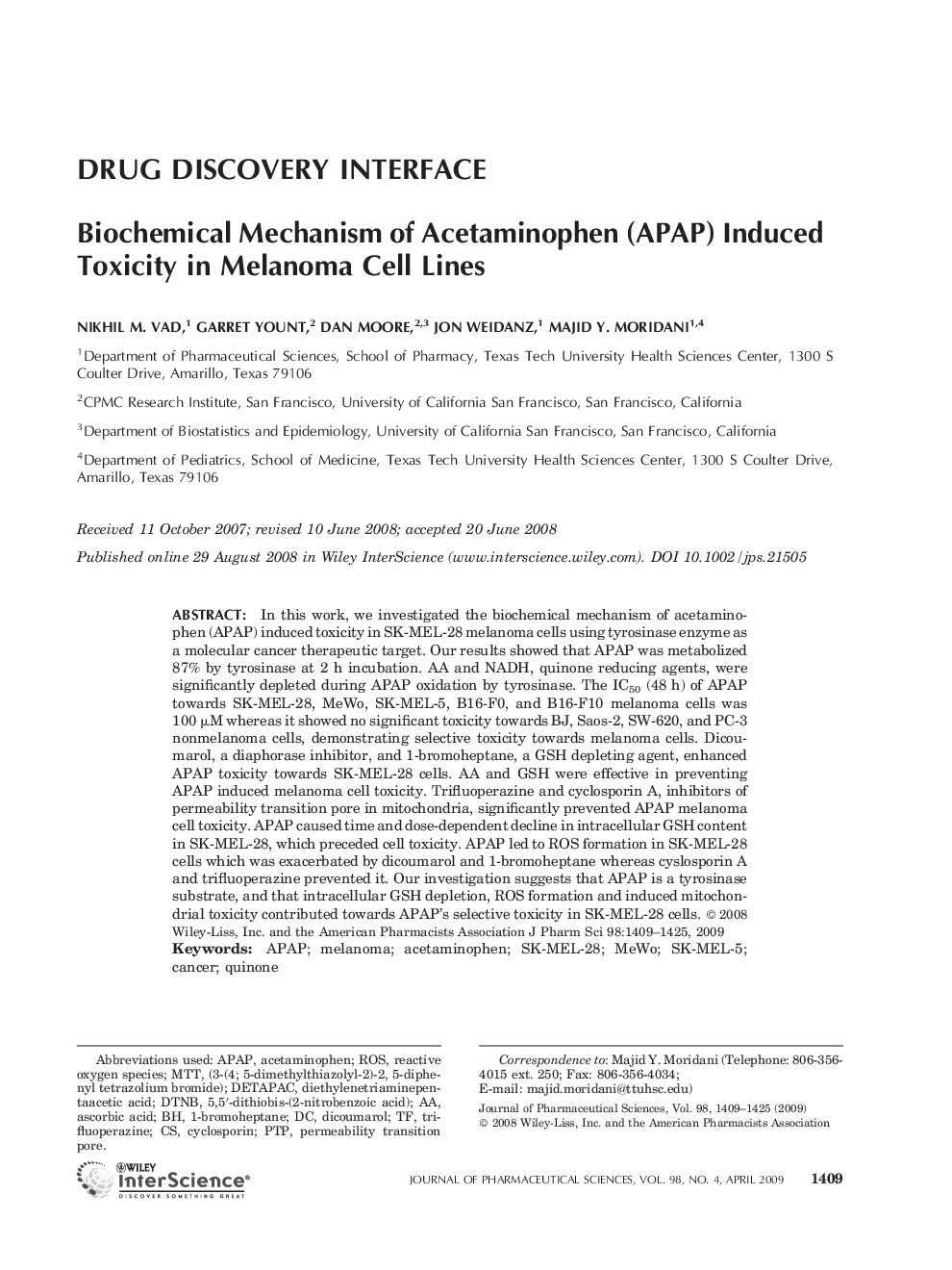| Article ID | Journal | Published Year | Pages | File Type |
|---|---|---|---|---|
| 2487094 | Journal of Pharmaceutical Sciences | 2009 | 17 Pages |
Abstract
In this work, we investigated the biochemical mechanism of acetaminophen (APAP) induced toxicity in SK-MEL-28 melanoma cells using tyrosinase enzyme as a molecular cancer therapeutic target. Our results showed that APAP was metabolized 87% by tyrosinase at 2 h incubation. AA and NADH, quinone reducing agents, were significantly depleted during APAP oxidation by tyrosinase. The IC50 (48 h) of APAP towards SK-MEL-28, MeWo, SK-MEL-5, B16-F0, and B16-F10 melanoma cells was 100 μM whereas it showed no significant toxicity towards BJ, Saos-2, SW-620, and PC-3 nonmelanoma cells, demonstrating selective toxicity towards melanoma cells. Dicoumarol, a diaphorase inhibitor, and 1-bromoheptane, a GSH depleting agent, enhanced APAP toxicity towards SK-MEL-28 cells. AA and GSH were effective in preventing APAP induced melanoma cell toxicity. Trifluoperazine and cyclosporin A, inhibitors of permeability transition pore in mitochondria, significantly prevented APAP melanoma cell toxicity. APAP caused time and dose-dependent decline in intracellular GSH content in SK-MEL-28, which preceded cell toxicity. APAP led to ROS formation in SK-MEL-28 cells which was exacerbated by dicoumarol and 1-bromoheptane whereas cyslosporin A and trifluoperazine prevented it. Our investigation suggests that APAP is a tyrosinase substrate, and that intracellular GSH depletion, ROS formation and induced mitochondrial toxicity contributed towards APAP's selective toxicity in SK-MEL-28 cells.
Related Topics
Health Sciences
Pharmacology, Toxicology and Pharmaceutical Science
Drug Discovery
Authors
Nikhil M. Vad, Garret Yount, Dan Moore, Jon Weidanz, Majid Y. Moridani,
